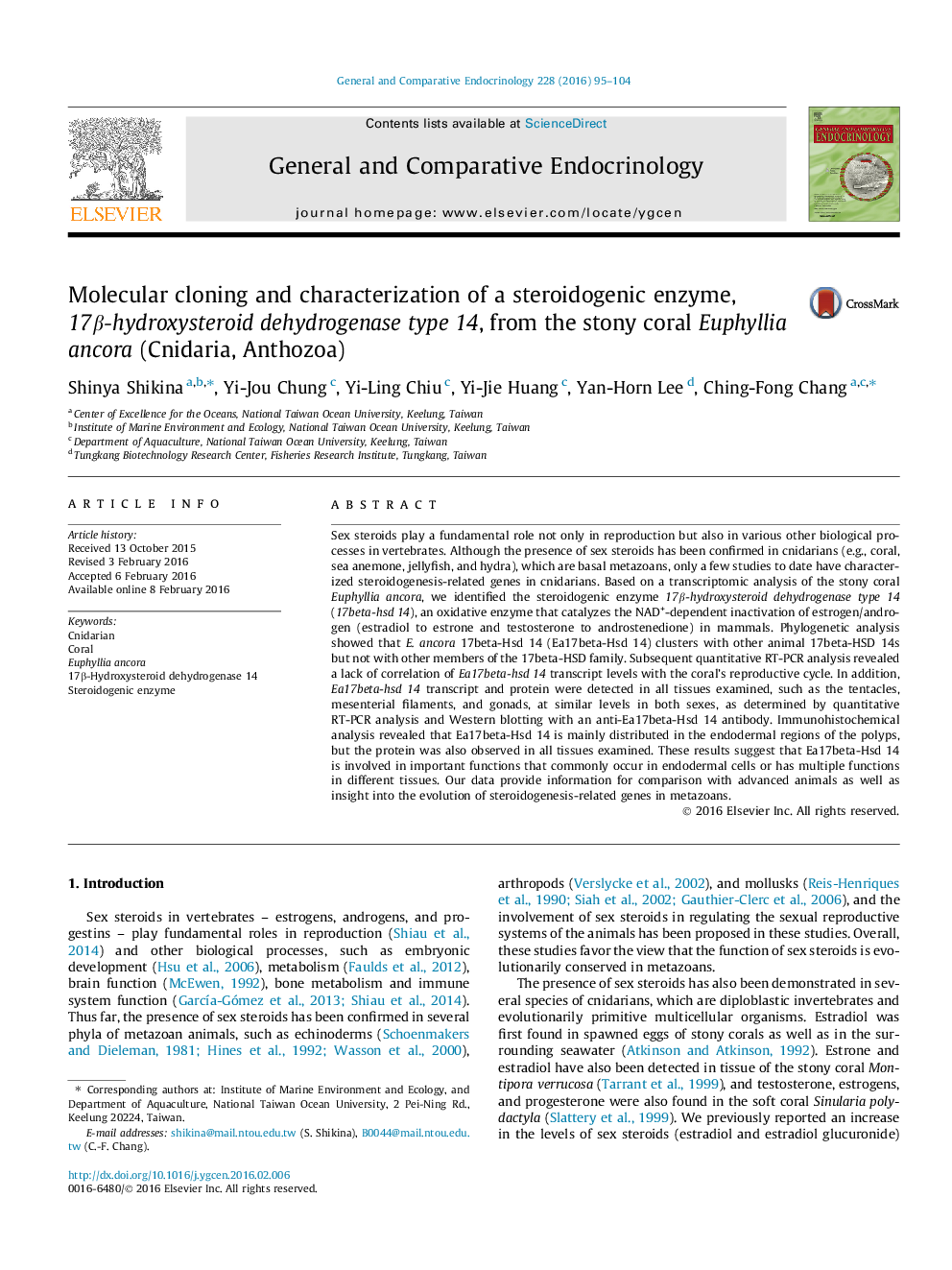| Article ID | Journal | Published Year | Pages | File Type |
|---|---|---|---|---|
| 2799814 | General and Comparative Endocrinology | 2016 | 10 Pages |
•17β-hydroxysteroid dehydrogenase type 14 cDNA was identified in the coral E. ancora.•17beta-hsd 14 mRNA levels were not correlated with the coral’s reproductive cycle.•17beta-hsd 14 mRNA and proteins were detected in all tissues we examined.•17beta-Hsd 14 protein was mainly distributed in the endodermal regions of the polyps.•17beta-Hsd 14 may be involved in functions commonly occurring in endodermal cells.
Sex steroids play a fundamental role not only in reproduction but also in various other biological processes in vertebrates. Although the presence of sex steroids has been confirmed in cnidarians (e.g., coral, sea anemone, jellyfish, and hydra), which are basal metazoans, only a few studies to date have characterized steroidogenesis-related genes in cnidarians. Based on a transcriptomic analysis of the stony coral Euphyllia ancora, we identified the steroidogenic enzyme 17β-hydroxysteroid dehydrogenase type 14 (17beta-hsd 14), an oxidative enzyme that catalyzes the NAD+-dependent inactivation of estrogen/androgen (estradiol to estrone and testosterone to androstenedione) in mammals. Phylogenetic analysis showed that E. ancora 17beta-Hsd 14 (Ea17beta-Hsd 14) clusters with other animal 17beta-HSD 14s but not with other members of the 17beta-HSD family. Subsequent quantitative RT-PCR analysis revealed a lack of correlation of Ea17beta-hsd 14 transcript levels with the coral’s reproductive cycle. In addition, Ea17beta-hsd 14 transcript and protein were detected in all tissues examined, such as the tentacles, mesenterial filaments, and gonads, at similar levels in both sexes, as determined by quantitative RT-PCR analysis and Western blotting with an anti-Ea17beta-Hsd 14 antibody. Immunohistochemical analysis revealed that Ea17beta-Hsd 14 is mainly distributed in the endodermal regions of the polyps, but the protein was also observed in all tissues examined. These results suggest that Ea17beta-Hsd 14 is involved in important functions that commonly occur in endodermal cells or has multiple functions in different tissues. Our data provide information for comparison with advanced animals as well as insight into the evolution of steroidogenesis-related genes in metazoans.
